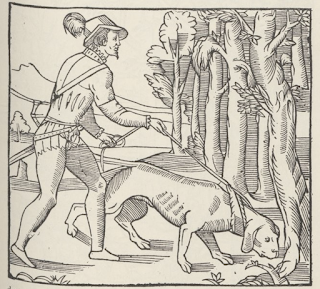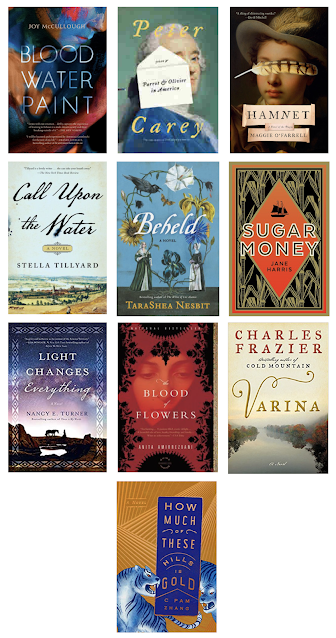The final volume of Patricia Bracewell's trilogy on Emma of Normandy, Queen of England, publishes on March 2, 2021 from Bellastoria Press. Yesterday, I
reviewed this marvelous book; today, Patricia answers a few questions about her novel.
1. Why Emma? How is the saga of an 11th century queen of Anglo-Saxon England relevant to today’s readers? What aspects of her actions and personality do you think speak most strongly to modern women?I think that women of today will find Emma inspirational. In our time women are breaking glass ceilings; in Emma’s time that ceiling was made of marble. The Anglo-Saxons were wary of the very concept of queenship, and Emma was only the second queen of all England. She was burdened by her youth and by the fact that she was a foreigner. She had to learn about England’s history, language and cultural norms, probably as an adolescent, and then figure out how to use them to her advantage. That took courage, but Emma has another kind of courage, as well. She is willing to speak truth to power, and although she is rarely thanked for it, that doesn’t stop her. So I think that courage and tenacity are two qualities that speak to women today, as well as Emma’s willingness to recognize the limits of her power and reach out to those who can help her get whatever she is after.

2. While writing, did you ever fear that Emma might teeter on the brink of "the perfect queen" stereotype? How did you try to humanize her? What faults define her and how does she suffer for them?
I am not a fan of novels in which the heroine is adored by everybody else in the book. So I’ve given Emma plenty of enemies who despise her, or don’t trust her, or who misinterpret her actions. Æthelred, Edmund, Edyth, Elgiva, even Emma’s own son are definitely not fans of the queen. Their opinions of her, right or wrong, throw some shade on her character. Emma herself, as clever as she is, does not have all the answers to the problems that she faces. She has to turn to others for help. Sometimes she makes bad decisions. On one occasion she acquires important information but doesn’t do anything with it, and that leads to catastrophe. On another occasion she makes a decision that leads to anguish when she realizes that she’s put her children at risk. Emma is courageous, yes, but that means, too, that she’s a risk-taker. She weighs the risks and makes a choice, but sometimes it turns out to be the wrong choice and she is not the only one who pays the price.
3. Æthelred, Athelstan, Cnut, Elgiva, Thorkell, Edmund, Edward, Edyth, Richard of Normandy—Emma has personal and political relationships with so many characters over the course of the trilogy, and these relationships all had to be tied up in this final volume. Which relationship was the hardest to get “right”? Is there any relationship you wished you could have spent more time wrapping up? Which relationship did you most enjoy exploring?
The relationship between Emma and Cnut was the most difficult to get “right” especially because I wanted anyone who had not read the earlier books to be able to understand it; and that is the relationship I most enjoyed exploring. They had a few scenes together in Shadow on the Crown when we saw Cnut through Emma’s eyes, and of course as I wrote that first book I was already thinking about what would happen in this one. But when I began writing The Steel Beneath the Silk I had to figure out a way for each of them to recall that first meeting which had happened ten years earlier. When I finally brought them together again towards the end of the book, I had to design some scenes that would allow them to interact and would reveal in a very short time how their relationship was evolving on both sides. It meant a lot of revisions. I think I was successful. I hope so. I wish I could have found a way to wrap up the relationship between Emma and Thorkell—have some sort of dialogue between them. But I had to focus on Emma and Cnut. Thorkell would have gotten in the way!
 |
| Winchester's Norman Great Hall, which is evocative of Anglo-Saxon great halls |
4. How did you manage to keep the setting fresh over the course of three novels? Which location in the book did you most enjoy visiting in real life during your extensive research?
The first novel opens in Normandy, but almost all of it is set in Wessex, mostly Winchester, with side trips to Exeter and to the Rollright Stones in Oxfordshire. The second novel is split between various royal estates in southern England and manors located in the northeast. All of these estates and manors were based on places I found mentioned in the Domesday Book, but I actually visited those areas if not the sites themselves. This third book goes much further afield, to Jorvik (York), Denmark, and Normandy as well as to numerous sites all over England. Of course, the scenes themselves are set in the great hall, or a church, or a bed-chamber or an abbey. There are several that are set on ships and one in the tower of one of the gates of London. I tried very hard to vary the setting as much as possible. I suppose the place I enjoyed visiting the most was Winchester. It was the Anglo-Saxon royal city; it was where Emma had a manor named Godbegot, the site of which you can still see today; and it is where Emma and Cnut are buried. It was, for me, the most evocative of that Anglo-Saxon world, and I’m longing to go back.
 |
| Godbegot House in Winchester, which dates back to the 11th c |
5. Emma has occupied your thoughts and hours for so many years now—how will your own life change now that you have completed your task and made her known to new readers? What did you learn about yourself as you researched and imagined her life and captured it in the pages of three books?
Well, I expect that I will have more time to pursue other activities like gardening and, unfortunately, dealing with piles of books and papers that need sorting, closets and drawers that need cleaning out, and a garage that resembles an industrial waste site. But I already have a list of books that I want to read or study, and I might find myself pondering ideas for a new novel—although not a trilogy! What I’ve learned about myself is that I love research; that I’m not interested in travel unless there is an element of education involved; and that I have more determination than I ever realized. Also, now, when I run up against some difficulty or hardship, I tend to ask myself “What would Emma do?”
**********
Many thanks to Patricia for offering this behind-the scenes look at her novel.
THE STEEL BENEATH THE SILK can be purchased from Amazon, Barnes and Noble, and Indiebound.
**********
Patricia Bracewell's love of reading led to college degrees in Literature, a career as a high school English teacher, and an unquenchable desire to write. Shadow on the Crown, the first book in her trilogy about the 11th century queen Emma of Normandy, was published in 2013 in the U.S. and England, and has been translated into Italian, German, Portuguese and Russian. Her second novel, The Price of Blood, published in 2015, continues the gripping tale of a queen whose marriage to an English king set in motion a series of events that would culminate in the Norman Conquest of 1066. In 2014 Patricia was honored to serve as Writer-in-Residence at Gladstone's Library in Wales where she conducted research for The Steel Beneath the Silk, the third book in her trilogy about Queen Emma. Patricia and her husband live in Oakland, California. Visit her at her website.








































